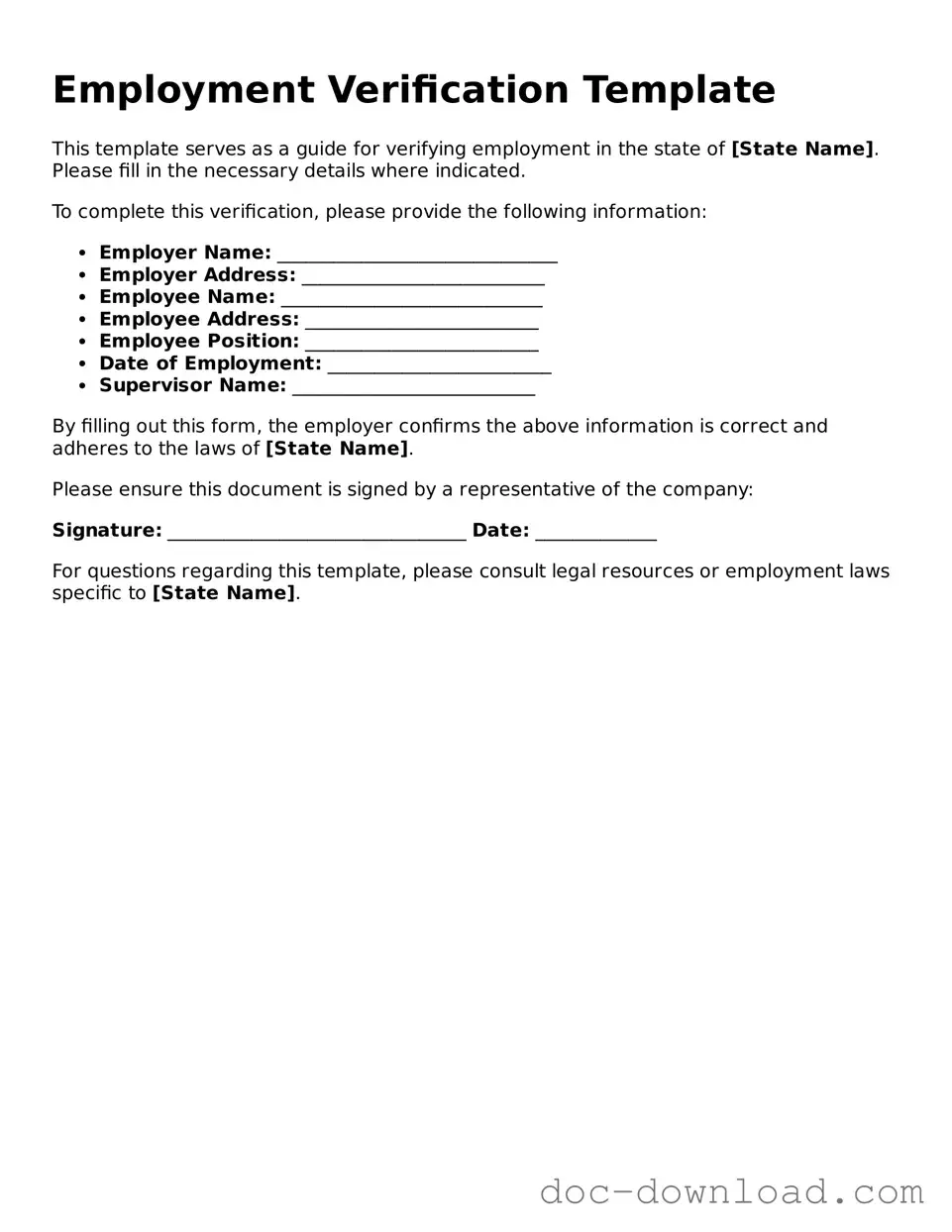The Employment Verification form is similar to the W-2 form, which is used by employers to report an employee's annual wages and the taxes withheld from their paychecks. Both documents serve as proof of employment and income, often required for loan applications or government assistance programs. While the Employment Verification form is typically completed by an employer to confirm employment status, the W-2 provides a summary of earnings and tax information for the entire year, making it essential for tax filing purposes.
In addition to these important documents, understanding the legal framework for establishing a business is essential, particularly in California, where entrepreneurs must file the necessary paperwork to officially create a corporation. The California Articles of Incorporation form is a legal document required to officially create a corporation in California. This form outlines key details about the business, including its name, purpose, and address. Proper completion of this form is essential for obtaining legal recognition and protection for your corporation; you can find the necessary details in the Articles of Incorporation form.
Another document that shares similarities is the Pay Stub. Pay stubs detail an employee's earnings for a specific pay period, including hours worked, gross pay, and deductions. Like the Employment Verification form, pay stubs confirm employment status and income. They are often used by employees to validate their earnings when applying for credit or renting property. Both documents provide critical information about an individual's financial standing, but pay stubs are more frequent and cover shorter timeframes.
The I-9 form is also comparable to the Employment Verification form. This document is used to verify an employee's identity and eligibility to work in the United States. Employers must complete the I-9 for each new hire, similar to how they complete the Employment Verification form when requested by a third party. Both documents are essential for ensuring compliance with employment laws and regulations, though the I-9 focuses more on legal eligibility rather than just employment status.
The Social Security Administration (SSA) Earnings Statement is another document that aligns with the Employment Verification form. This statement provides a record of an individual’s earnings reported to the SSA over their working years. It can be used to verify income for various applications, much like the Employment Verification form. However, the SSA Earnings Statement is more comprehensive, detailing earnings over a lifetime, while the Employment Verification form is typically more focused on current employment status and income.
Additionally, the Reference Letter serves a similar purpose in verifying employment. Often written by a previous employer, this letter confirms an individual's job title, responsibilities, and duration of employment. While the Employment Verification form is a standardized document, a Reference Letter is more personalized and may include qualitative assessments of an employee’s performance. Both documents help provide context for a person's work history when applying for new positions or loans.
The Offer Letter is another document that can be compared to the Employment Verification form. An Offer Letter outlines the terms of employment, including job title, salary, and start date. While the Employment Verification form confirms that an individual is currently employed, the Offer Letter signifies the initial agreement between the employer and the employee. Both documents play a crucial role in the employment lifecycle, but they serve different functions in verifying employment status.
Lastly, the Employment Contract is similar in that it formalizes the relationship between an employer and an employee. This contract typically includes details about job responsibilities, compensation, and benefits. Like the Employment Verification form, it serves as proof of employment. However, the Employment Contract is a more comprehensive document that outlines the terms of employment in detail, while the Employment Verification form is often a simpler confirmation of current employment status.
